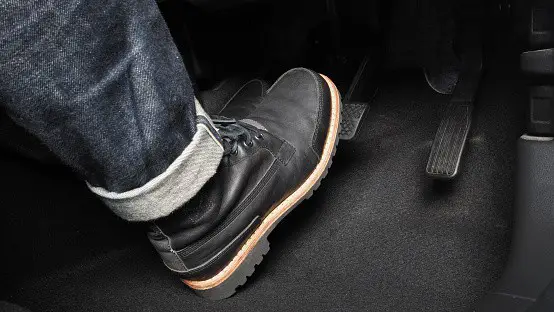Disc braking systems work by squeezing rotors attached to the axles in between opposing sets of brake pads and it is the resulting friction that stops a vehicle’s motion. Friction creates heat so brake pads and rotors can be subjected to extreme temperatures during braking. But how much of this heat carries over to the calipers which are responsible for pressing the brake pads against the rotor’s surface?
Under extreme braking conditions, such as on a racetrack, calipers can reach temperatures exceeding 500° F (250° C). At this heat, calipers can undergo major stress, and damage to internal seals is possible, if not likely. But calipers can easily withstand the heat resulting from normal braking.
While brake pads and rotors bear the brunt of the heat (which can be extreme under certain driving conditions) that is generated during braking, the calipers, which are next in line in terms of proximity to the pads and rotors, can be subjected to radiant heat. And depending on the circumstances, the temperatures that calipers endure can be surprising. Read on to learn just how hot calipers can get.
How Hot Do Brake Calipers Get?
Calipers play an integral role in braking as they are responsible for pressing the brake pads against the surface of the rotors when the brake pedal is pressed down by the driver. Because the brake pads are mounted on the calipers, the heat that the pads absorb during braking can spread to the caliper body. The intensity of this heat can vary with the type of driving (and hence, braking) that is involved.
Under normal driving conditions (this can vary wildly depending on traffic conditions and geography), brake pads and rotors can reach temperatures of nearly 400° F (200° C).
Since calipers are not directly subjected to friction, it stands to reason that they do not get as hot as the rotors and pads. But there are instances where calipers are subjected to extreme heat and those occur in the racing industry.
Brake Caliper Temperature Ranges
A good indicator of the incredible temperature ranges that brake calipers must perform under on race days is special stickers that can be applied to the surface of each caliper body.
These heat-sensitive strips indicate the peak temperatures that each caliper has withstood and they fall into these ranges:
- 0° F to 250° F (0° C to 121° C) – At these levels, calipers are considered to be within a safe temperature range (these temperatures are therefore not even indicated on the strips)
- 250° F to 330° F (121° C to 166° C) – Although within the threshold for safe braking, at this range proper brake system ventilation (via directed airflow) is advised
- 370° F to 450° F (188° C to 232° C) – Calipers are considered to be running hot at this stage and the integrity of components like the seals can be compromised (a visual inspection to check for brake fluid leaks is recommended)
- 450° F to 536° F (232° C to 280° C) – At this temperature range, brake calipers are considered to have been operating too hot and must be inspected immediately for signs of damage and all caliper seals will need to be serviced
While the rotors and brake pads are subjected to the highest temperatures, the radiant heat generated during braking can clearly affect the calipers as well, particularly under hard-braking conditions like racing.
Can Caliper Paint Withstand High Temperatures?
A common feature found on many high-end vehicles such as sports cars and luxury automobiles is brightly colored brake calipers peeking through the spokes of the alloy wheels. In fact, painted calipers are a popular accessory on world-renowned makes like Ferrari, Porsche, and Lamborghini, just to name a few.
Aside from adding a distinctive splash of color, the paint that is used to color these calipers also demonstrates the temperature ranges that calipers can be subjected to under extreme circumstances.
Take, for instance, two popular types of caliper paint for after-market applications:
- Aerosol caliper paint – for do-it-yourselfer types, aerosol caliper paint is available in a wide variety of colors, is easily applied, can fully cure overnight, and is rated to withstand intermittent exposure to extreme temperatures as high as 900° F (482° C)
- Epoxy caliper paint – this multi-step process requires more time and effort but achieves a maximum temperature threshold of 980° F (527° C) and comes in a wide range of eye-catching colors, including high-gloss options
Sporting bold colors like racing red and lime green, brake calipers can add a distinctive element to the overall look of a vehicle. But make no mistake, calipers serve a vital purpose in stopping an automobile, and to this end, they are built (and painted) to withstand high temperatures.
Final Thoughts
Most drivers will never reach speeds like those found in racing, and therefore will not push their brakes to those extreme limits either, but it is nice to know that brake calipers are designed to withstand the occasional exposure to high temperatures.

